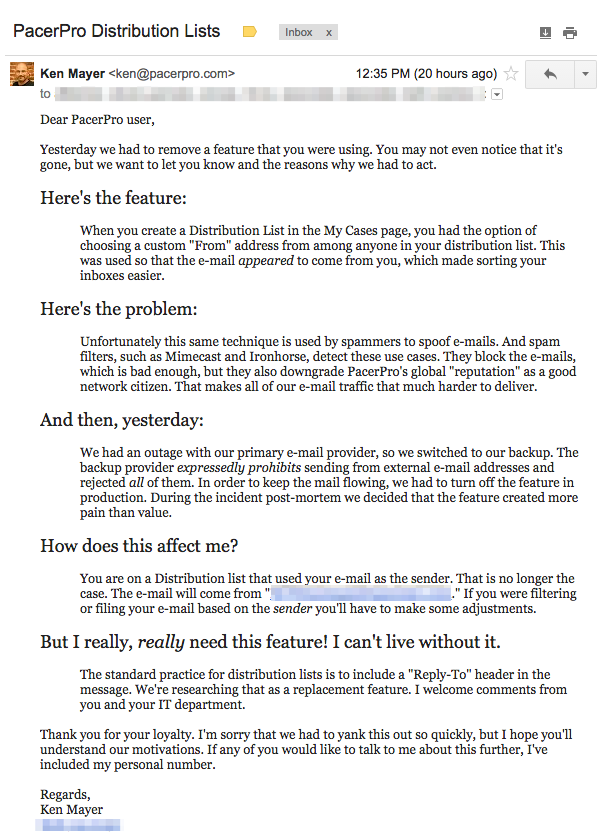Anatomy of an Apology
September 22, 2016
[management I’ve written my fair share of apologies. It’s a skill, like any other, one that you wish you didn’t have to practice. Yesterday, I had to write a mea culpa to our users. It was our fault, and we came clean about it. I got compliments on the letter! I think I increased customer loyalty as a result. Fuck-ups don’t have to hurt your business.
Here’s the letter:

1. Write the tl;dr
You don’t have to get into specifics; assess the impact to them. Don’t bother with “I’m sorry,” just stick to the facts, m’am.
2. What’s this about
Okay, now go into detail about what changed. In this case, we completely removed a feature. I described what the feature was, where it was located in our application and why it existed in the first place.
3. Why we had to make the change
Keep it simple. My users are attorneys, associates, librarians and paralegals. They are smart people, but not very technical.
4. Why now
This feature has been in production for months. We knew about the risk, but we decided it was an acceptable one. Until two days ago. Normally, if we have a feature that we plan to remove, we’ll make time for the transition, warn the users in advance, and ease them out of it gracefully. This week was not normal. That is what we fucked up. We knew this was a potential problem, but did not properly assess the risks.
5. Impact to the reader
Tell them how it hurts. It’s the most important thing that our dear reader needs to know, after all.After reading the letter, with hindsight, I would have moved this up to the second paragraph.
6. Remedial actions on our part
What we’re doing to make up for the failure.
7. Recognize the value of the reader
I appreciate my clients. Not only because they put bread on my table, but because, without them, I wouldn’t have a product to build. Loyal customers give me honest feedback, which makes PacerPro all that much better in the next iteration.
8. Make it personal
I gave them my e-mail, my phone number (which I will personally answer). And I said “Thank you.”